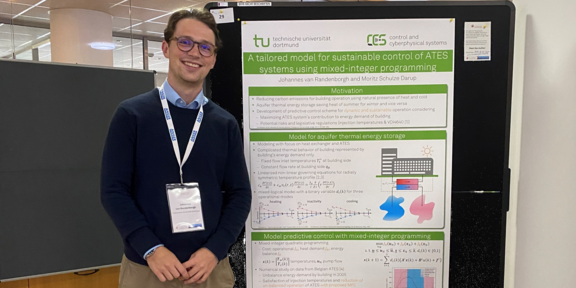Paper and Poster @ DGK 2023

Aquifer thermal energy storage (ATES) systems are used to temporarily store heat or cold in open aquifers in order to regulate building temperatures. Although the basic concept of storing heat in summer for winter (and vice versa) is simple, the efficient operation of ATES is non-trivial. For instance, ATES are necessarily combined with conventional heating systems or heat pumps to handle peak loads, which complicates their efficient operation. Moreover, it is important to maintain a certain heat balance in the underground to ensure long-term operation of ATES. Both challenges can be addressed with modern control technologies. In particular, model predictive control (MPC) enables to optimize the current operation while taking constraints and long-term requirements into account. The performance of MPC crucially depends on the quality of the model. In fact, the model should accurately capture the dominant system dynamics while being numerically cheap to evaluate. Existing approaches often address only one of these aspects. For instance, Rostampour et al. (2016) consider a simplistic battery-like model whereas Beernink et al. (2022) build on a complex MODFLOW model. In our contribution, we present a novel MPC scheme which reflects a sweet-spot between these extremes. More precisely, our model builds on linearizations of the heat transport equation for the three operation modes injection, extraction, and storing (or inactivity). Incorporating these modes in the MPC leads to a mixed-integer (optimization) program, which can be solved efficiently compared to an MPC utilizing a MODFLOW model.
Contact Johannes for further details.








